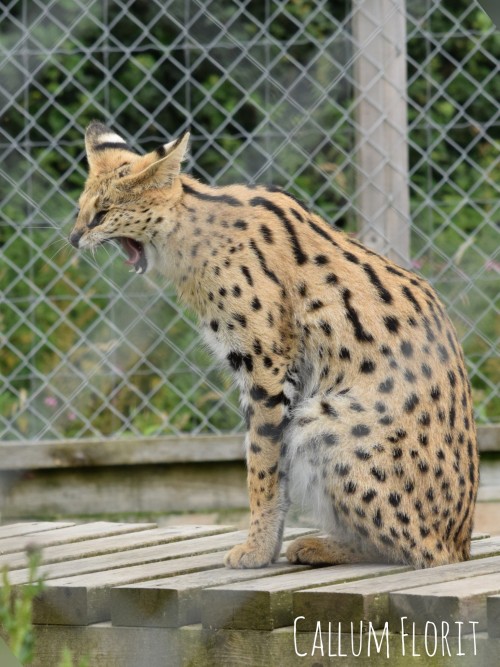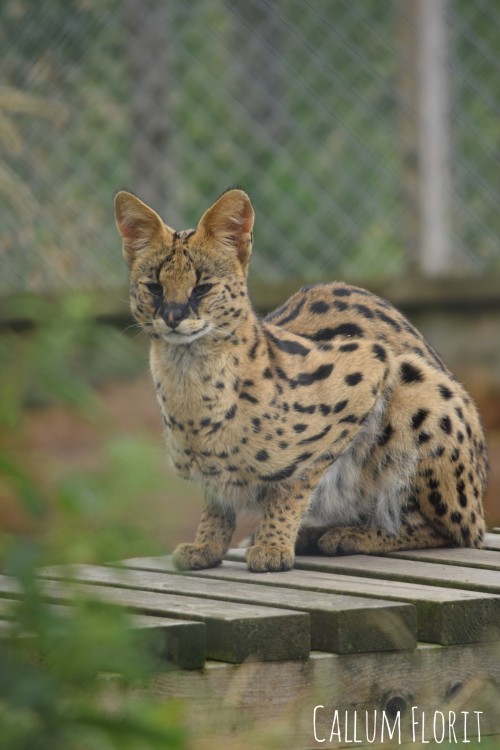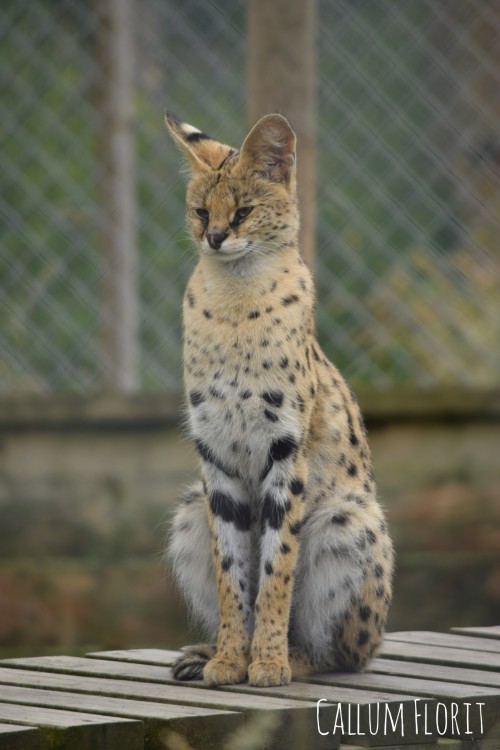This week I am currently car camping across Dartmoor national park. This past weekend, I went to Axe valley wildlife park and wildwood Escot, where I saw a lot of amazing animals many of which I haven’t seen before. There were Arctic foxes at both parks and is safe to say they stole my heart and I spent at least 30 mins at each of them. However, another animal that I saw at Axe Valley Wildlife Park that I absolutely adored was the Serval Cat.
Taken at Axe Valley Wildlife Park by Callum Florit
————————————
At Axe Valley Wildlife Park there are two Serval Cats 1 male and 1 female, who share a nicely sized and shaped enclosure with plenty of different levels for climbing and crawling.
Whilst I was there a keeper was scatter feeding them chicks, chucking them on various different levels of the enclosure and in all directions. This is a key feeding method as its a form of enrichment, letting the animals search for their food and exercise. When there’s more than one animal in the enclosure is also helps make sure they both get fed, as while one cat is feeding one side of the enclosure the other cat is feeding the other side and helps avoid fighting over food.
Along with chicks, in captivity, they will eat rats and quail. However, in the wild, they would eat mainly rodents but also hares, hyraxes, birds, reptiles, frogs, and fish.
https://youtu.be/9nzTCXYCE2w here’s a short clip from my day there.
Taken at Axe Valley Wildlife Park by Callum Florit
——————————-
Serval cats are naturally African and can be found in most parts of Africa apart from arid regions like deserts.
They are normally found in open grasslands, Savanna and wooded Savanna, and the outskirts of rainforests. The presence of water within these environments is key for the Serval Cat.
Many of the Serval’s habitat consists of long grasses, because of this they have adapted long legs, the longest if any cats relative to body size, this helps them see over the grasses and see long distances. They also have large sensitive ears to help detect rodents and will sometimes sit with eyes closed, listening for up to 10 minutes.
It is estimated that about 50% of their hunts are successful.
Taken at Axe Valley Wildlife Park by Callum Florit
———————————
Servals are mostly crepuscular (dawn or dusk) or nocturnal but will come out during the day in the wet seasons.
Servals are mostly solitary (not social), and unlike the other animals I have written about, they aren’t monogamous, when the female comes into heat, she will attract any nearby males and mate with any of them. Females generally maintain a 2-9meters Kilometers squared territory whilst males have territories twice the size and will overlap with 2 or more females.
When they breed the female can have 2-3 kits but sometimes up to 5, the kittens will stay with their mum for up to a year, after that, they will leave.
They generally live till 10 but in captivity can live up to 20.
Servals are listed as least concern by the IUCN red list, mainly because they have a healthy reproduction rate and a large distribution range.
However they due face some threats, mainly by humans. They are hunted in Africa for their fur and much of their habitat is being damaged or intruded on for farmland.
Thank you for reading. Hope you enjoyed and learned something. And enjoyed my pictures.
Taken at Axe Valley Wildlife Park by Callum Florit
———————————–



